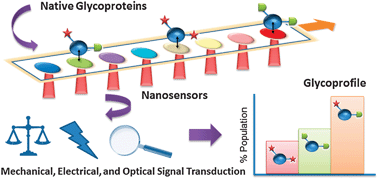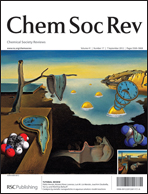Nanoengineered glycan sensors may help realize the long-held goal of accurate and rapid glycoprotein profiling without labeling or glycan liberation steps. Current methods of profiling oligosaccharides displayed on protein surfaces, such as liquid chromatography, mass spectrometry, capillary electrophoresis, and microarray methods, are limited by sample pretreatment and quantitative accuracy. Microarrayed platforms can be improved with methods that better estimate kinetic parameters rather than simply reporting relative binding information. These quantitative glycan sensors are enabled by an emerging class of nanoengineered materials that differ in their mode of signal transduction from traditional methods. Platforms that respond to mass changes include a quartz crystal microbalance and cantilever sensors. Electronic response can be detected from electrochemical, field effect transistor, and pore impedance sensors. Optical methods include fluorescent frontal affinity chromatography, surface plasmon resonance methods, and fluorescent carbon nanotubes. After a very brief primer on glycobiology and its connection to medicine, these emerging systems are critically reviewed for their potential use as core sensors in future glycoprofiling tools.

You have access to this article
 Please wait while we load your content...
Something went wrong. Try again?
Please wait while we load your content...
Something went wrong. Try again?


 Please wait while we load your content...
Please wait while we load your content...